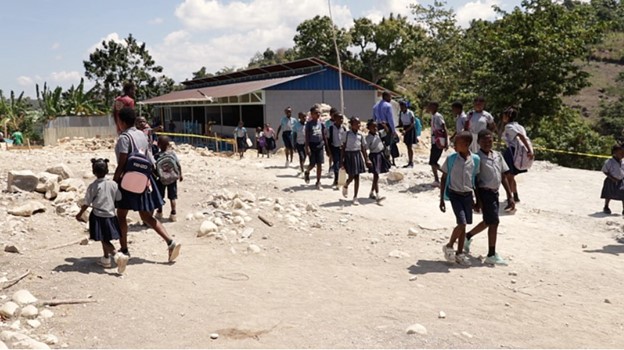
Climate Disasters and the Imperative for Safe Housing
As climate disasters increasingly threaten millions globally, ensuring resilient and safe housing has become crucial in mitigating displacement. In 2023 alone, climate-related disasters such as floods, storms, and wildfires displaced approximately 26.4 million people, according to the Internal Displacement Monitoring Centre (IDMC).
While climate change exacerbates the frequency and severity of these extreme weather events, it is not the sole cause. Rising global temperatures are making such events more common, prompting more people to face the threat of losing their homes and livelihoods. For many, preparing for these disasters has become a routine aspect of life, with communities taking measures to shield themselves from the impacts of severe weather.
"No country is immune to disaster displacement," Alexandra Bilak, IDMC's director, emphasized. "However, there is a noticeable difference in how displacement affects nations that proactively plan and prepare for its impacts compared to those that do not. Those that use data to inform prevention, response, and long-term development plans are more successful in managing these challenges."
Countries on the frontline of the climate crisis, such as small island states, are particularly vulnerable. For instance, Fiji has experienced significant economic damages from disasters over the past four decades, with annual losses projected to increase from US$16 million to around US$85 million due to cyclones and earthquakes. This is substantial for a nation with a population of under 1 million.
In Fiji, many residents live in informal settlements that are highly susceptible to cyclones, especially those near riverbanks or coastal areas. A recent project funded by the Adaptation Fund, implemented by UN-Habitat, aims to enhance resilience against extreme weather by "climate-proofing" housing. The project focuses on protecting homes from storm surges, with key interventions including relocating new homes away from high-risk areas, training local builders in disaster-resistant construction methods, and introducing 'stilted safe rooms'—simple, raised structures designed to offer refuge during flooding.
Flood control is another crucial aspect of climate-resilient infrastructure. In Fiji, efforts include upgrading drainage systems, improving water storage, and enhancing access routes to support communities during cyclones.
In contrast, Haiti—a nation plagued by poverty, conflict, and frequent natural disasters—has only begun to address climate-proofing infrastructure. The country's education sector, severely affected by storms like Hurricane Matthew in 2016, is receiving support from the Adaptation Fund. With approximately US$10 million in funding, UNESCO is aiding the restoration of 620 schools, improving disaster risk awareness, and implementing new construction standards. This initiative has already benefited over 150,000 students, thanks to strong collaboration among various stakeholders.
Experts stress the need for fundamental changes in how we approach living in disaster-prone areas. Relocating settlements away from major water sources and implementing projects that manage excess water—such as those supported by the Adaptation Fund in locations like Indonesia and Antigua and Barbuda—are vital strategies for maintaining habitable homes amidst extreme weather.
Mikko Ollikainen, head of the Adaptation Fund, notes that disaster risk reduction and early warning systems constitute about 16% of the Fund's portfolio. Many projects aim to enhance resilience in informal settlements and community centers, offering scalable solutions that could positively impact other vulnerable areas.
While adaptation measures are critical, their effectiveness is limited if climate extremes continue to intensify. Investing in these solutions is essential not only to protect homes from the increasing frequency of extreme weather but also to address long-standing issues of poverty. Accelerating these efforts is crucial to reducing the number of people displaced by climate-related disasters each year.